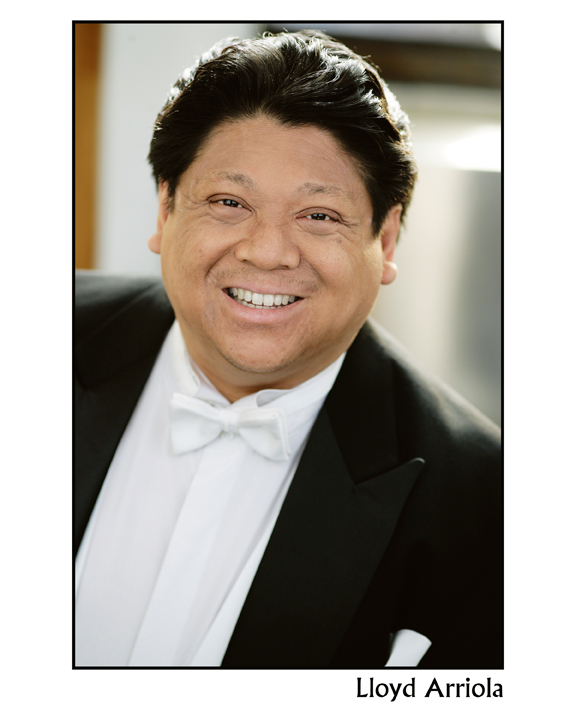Lloyd Arriola pianist in Review
Lloyd Arriola, piano Weill Recital Hall at Carnegie Hall, New York, NY November 20, 2011Continuing the celebration of Franz Liszt’s 200th anniversary, Lloyd Arriola added his Weill Recital Hall debut to the festivities, bringing works to the table that are less than familiar to the average concertgoer. One could dedicate this entire review to Mr. Arriola’s bold and original programming, but the performer himself warrants full focus here; suffice it to say that the unconventional selections underscored the freshness that pervaded the recital in every way.
My first impression of Mr. Arriola was of his highly entertaining program notes, written in a conversational style with occasionally irreverent humor (e.g., a comparison of two of Liszt’s “sister” works to Wynonna and Ashley Judd), but always with expertise and insight. After decades of attending concerts, these are among the few sets of program notes I am actually tempted to save. I’d like to devote a separate article to this subject –how program notes should not read like a college theory essay or worse – but will meanwhile say that they do matter. Mr. Arriola “sells” his music, and it starts before the concert. The pianist’s biography, listing a doctorate from Juilliard and numerous performances as soloist, collaborator, and conductor, was similarly refreshing, avoiding the puffery one sees so often, but presenting the portrait of a working musician wearing many hats, all requiring top-notch skills. Following the biography was a page of grateful acknowledgments that would make an Oscar-winner blush. If all this text painted the picture of Mr. Arriola as a passionate “people person” his first steps onstage confirmed it. Cheers greeted him before he played a note, not the work of a claque, but the intense, spontaneous outburst of many friends present.
In an instant summoning of concentration, Mr. Arriola took on an opener of Liszt’s “Grand solo de concert,” composed as a test piece for students at a Paris Conservatory competition in 1849. A test it is, chock full of every kind of technical stunt possible (and some impossible!), but Mr. Arriola handled it with polish and aplomb. It is a substantial and exhausting work, especially when played with the intensity given on this occasion, so one marveled not only at its choice (it is understandably neglected), but also at its placement as opening piece.
A hard act to follow, it was followed nonetheless by another neglected giant, Liszt’s Fantasia and Fugue on the Chorale “Ad nos, a salutarem undam” (Illustration No. 4 from Meyerbeer’s “Le Prophéte”) transcribed by Ferrucio Busoni. Here Mr. Arriola coupled his large-scale technique with an absolutely solid mastery of structure and difficult fugal writing. It was a dramatic performance – a rare combination of passion and extroversion with laser-sharp cerebral focus. Occasionally, I felt Mr. Arriola overplayed dynamically, producing some unduly harsh sounds along with some rather distracting foot stomping, but I would take his commitment any day over its opposite. The excitement of the evening was, after all, palpable.
After intermission came an assortment of what one might call curiosities. Liszt’s shortest composition “Prélude omnitonique” (about six seconds long) was summarized by the pianist’s announcement that “every birthday party deserves a gag gift.” All jokes aside, Liszt was in many ways a visionary (as one might see in a more serious vein in the “Bagatelle sans Tonalité” and other works), and a listener enjoyed this break from the pyrotechnics. After some laughter, the Prelude was replayed (a nice touch) as an introduction to “Vagyodas Amerika Utan” (“Longing for America”) by the late Liszt proponent Ervin Nyiregyhazi (1903-1987). It was a welcome discovery for those of us who know the name Nyiregyhazi mainly as a controversial pianistic figure. Also most welcome was Liszt’s introspective “En Rêve (1884-85) played with sensitivity. In addition we heard Fantasia in D (2011), a work Mr. Arriola commissioned from Harrison Gross, a 17-year-old student at the school where Arriola is a pianist. It was a touching gesture.
Liszt Magyar Rapszódia No. 12 (Heroïde élégiaque), an earlier version of the Hungarian Rhapsody No. 5, closed the program with brilliance and spirit. An encore by the pianist cleverly fused Gershwin’s “Someone to Watch Over Me” with bits of Liszt’s Piano Concerto in E-flat (along with touches of Fats Waller and others). One could only guess that Liszt, the quintessential performer, would have approved. The audience certainly did.

